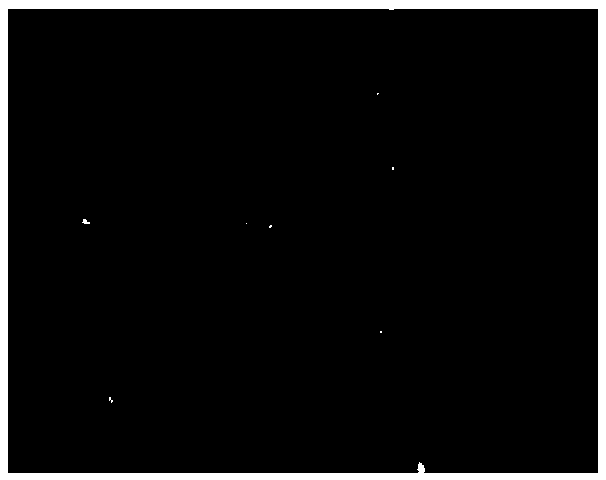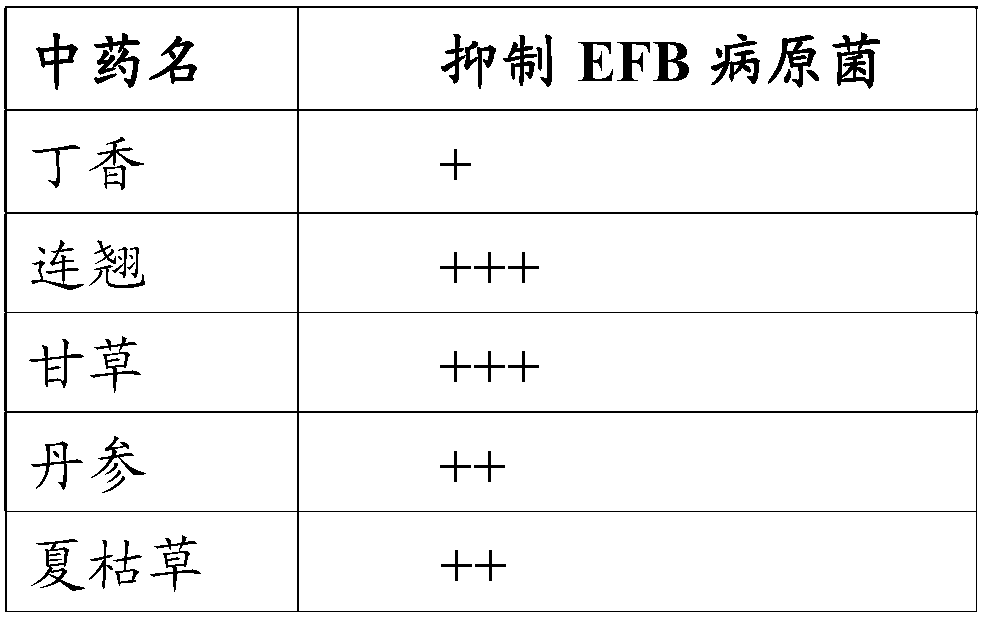Application of liquorice and extractive thereof in preventing and controlling apiary bee coccus
A technology of extract and licorice water, applied in the field of application of licorice and its water extract in the prevention and treatment of honeybee coccus, can solve the problem of no medicine available, and achieve the effect of no toxic side effects, good effect and simple usage
- Summary
- Abstract
- Description
- Claims
- Application Information
AI Technical Summary
Problems solved by technology
Method used
Image
Examples
Embodiment 1
[0017] Embodiment 1, the screening of Chinese herbal medicine for the prevention and treatment of honeybee European larval rot disease
[0018] The present invention studies the in vitro inhibitory effect of Chinese herbal medicine extracts on Melissococus pluton. The specific method is as follows:
[0019] 1. Preparation of honeycomb melissa officinalis suspension
[0020] Hive coccus is a lanceolate coccus with a diameter of 0.5-1.1 microns, translucent pearls, water droplets, no motility, Gram-positive but unstable staining, and sometimes Gram-negative. The bacterium does not form spores, and sometimes capsules can be formed. During smear examination, it can be seen that most of them are single, and there are also pairs, chains or quincunx network arrangements. The optimum culture temperature for bacteria is 35°C, and the optimum pH for the growth of the bacteria is 6.7. According to the conventional method, the honeycomb was collected and identified.
[0021] The meth...
PUM
 Login to View More
Login to View More Abstract
Description
Claims
Application Information
 Login to View More
Login to View More - R&D
- Intellectual Property
- Life Sciences
- Materials
- Tech Scout
- Unparalleled Data Quality
- Higher Quality Content
- 60% Fewer Hallucinations
Browse by: Latest US Patents, China's latest patents, Technical Efficacy Thesaurus, Application Domain, Technology Topic, Popular Technical Reports.
© 2025 PatSnap. All rights reserved.Legal|Privacy policy|Modern Slavery Act Transparency Statement|Sitemap|About US| Contact US: help@patsnap.com



